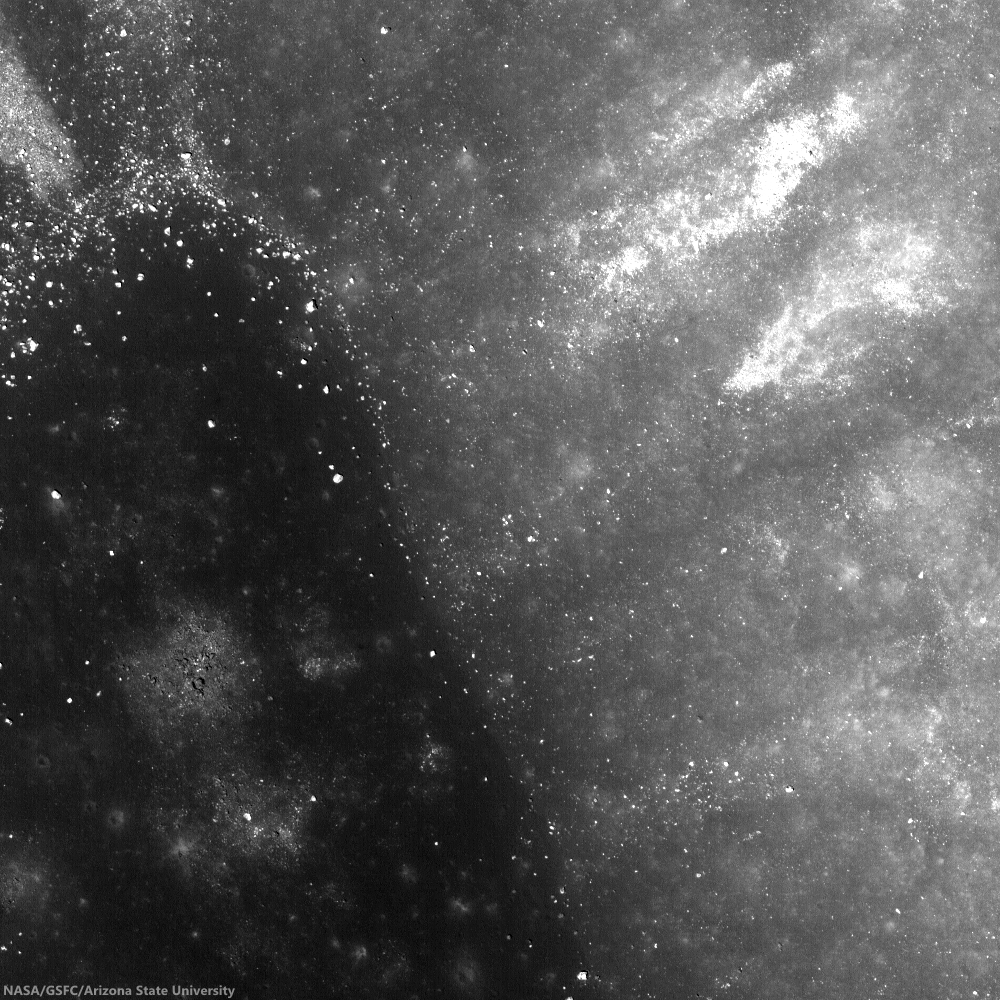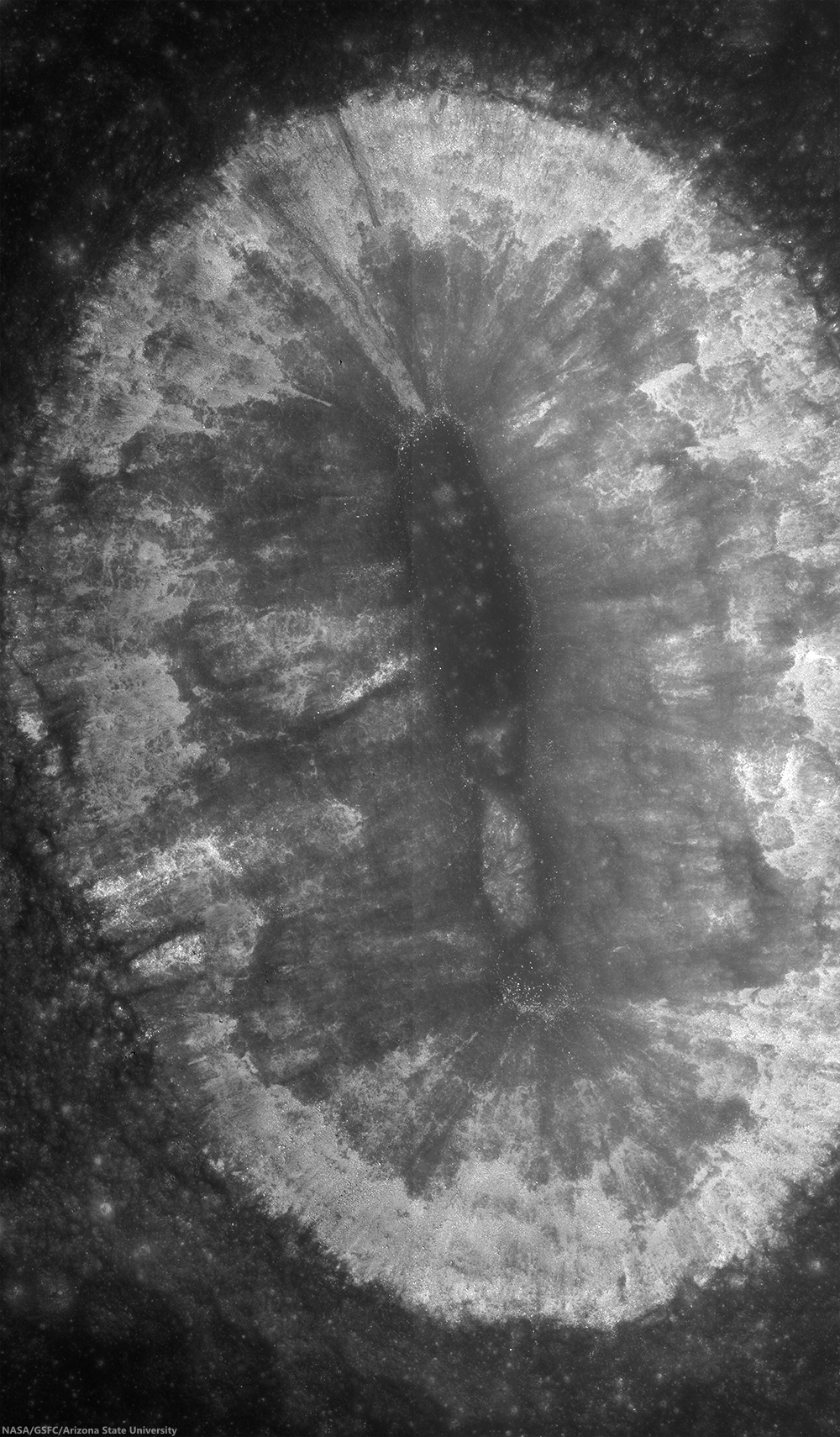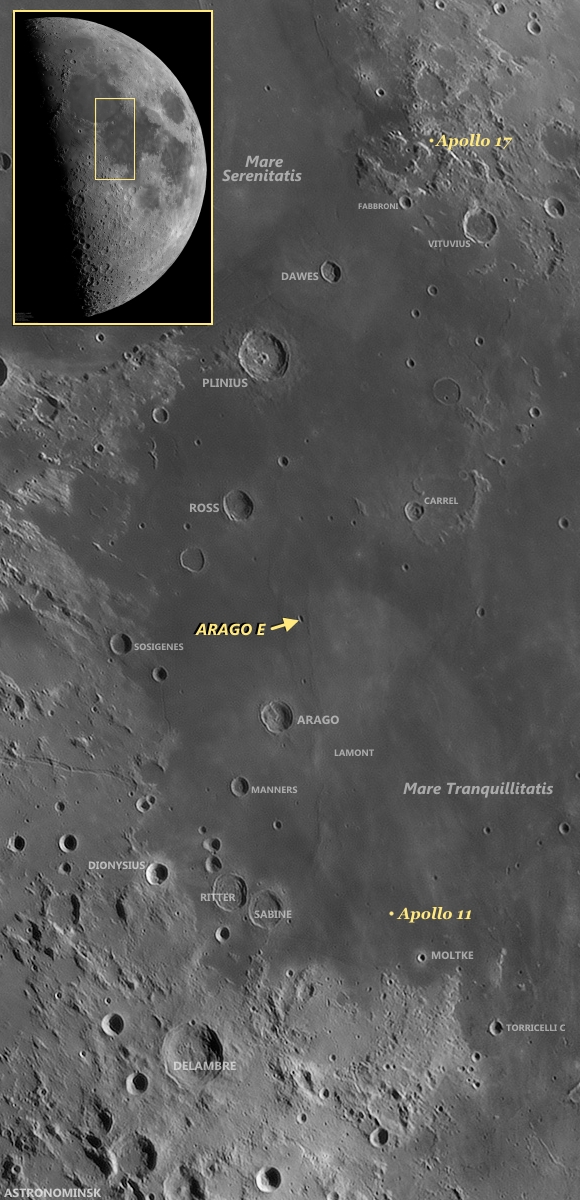 |
| Wall and Rim of Arago E: Full resolution sample from and unusually low-altitude, LROC Narrow Angle Camera (NAC) observation from only 40 km altitude. The sample above shows detail of the northeast wall and floor of Arago E, an excavation of the complex Arago area of western Mare Tranquillitatis. The floor is peppered with boulders that have tumbled down the crater wall. This roughly 800 meter sq. field of view was cropped from LROC NAC M155084711R, LRO orbit 7989, March 18, 2011; resolution 47 cm per pixel, angle of incidence 10° from 40.02 km [NASA/GSFC/Arizona State University]. |
Raquel Nuno
LROC News System
Arago E (8.5°N ,22.71E°) is an elongated crater located in Mare Tranquillitatis, north of the July 1969 landing site of Apollo 11.
An unusually shaped crater, Arago E is nestled between two wrinkle ridges (see Wide Angle Camera context image below), tectonic features formed by the deformation of the basaltic rocks that make up the lunar maria.
Massive maria lavas placed an extra load on the surface, and these deformations are adjustments of the surface due to the unrelenting force of gravity buckling the rock.
This crater's elongated shape is perhaps due to an oblique impact, which impart excess horizontal momentum into the surface leaving an elongated shape. However, for this to happen it's thought a progenitor projectile had to have been arriving from less than 30° above the horizon.
Volcanic vents can also display elongated shapes but don't exhibit raised rims and usually lack a flat floor from pooled impact melt, and both features are seen in Arago E.
LROC News System
Arago E (8.5°N ,22.71E°) is an elongated crater located in Mare Tranquillitatis, north of the July 1969 landing site of Apollo 11.
An unusually shaped crater, Arago E is nestled between two wrinkle ridges (see Wide Angle Camera context image below), tectonic features formed by the deformation of the basaltic rocks that make up the lunar maria.
Massive maria lavas placed an extra load on the surface, and these deformations are adjustments of the surface due to the unrelenting force of gravity buckling the rock.
 |
| Mosaic from the left and right LROC NAC cameras, LROC NAC observation M155084711R and L, allowing a wider look at the 3.7 km c 6.7 km interior of Arago E. View the original (1000 x 1710) reproduction HERE [NASA/GSFC/Arizona State University]. |
 |
| Elongated Arago E and the ruffled surface of west Tranquillitatis: High angle, early morning illumination highlights the undulations of the Tranquillitatis terrain between 25.5 km Arago, at lower left (6.15°N, 21.43°E) and the elongated, still partially shadowed interior of Arago E at upper center in this roughly 75 km-wide field of view from a mosaic made from two sequential LROC Wide Angle Camera passes, in orbits 6772 and 6773, December 13, 2010. 60 meters per pixel resolution, angle of incidence 74° from 44 km. View the original reproduction (1223 x 1951) HERE [NASA/GSFC/Arizona State University]. |
Volcanic vents can also display elongated shapes but don't exhibit raised rims and usually lack a flat floor from pooled impact melt, and both features are seen in Arago E.
 |
| Earthview context for Arago E: Arago and Arago E are familiar landmarks in telescopic views from Earth. With only a little practice, even amateurs, using modest telescopes can pick them out and, in their mind's eye at least, also pick out the relatively nearby landing sites of Apollo 11 and Apollo 17, the first and the last Apollo surface expeditions. The full-scale mosaic (inset) was "stacked" from ten frames April 21, 2010 by Yuri Goryachko, Mikhail Abgarian & Konstantin Morozov of Belarus [Astronominsk]. |
Related Posts:
A Stark Beauty All Its Own
Constellation Region of Interest at Mare Tranquillitatis
Wrinkle Ridges in Aitken Crater
Wrinkle Ridge vs. Impact Crater
Not Your Average Crater


No comments:
Post a Comment